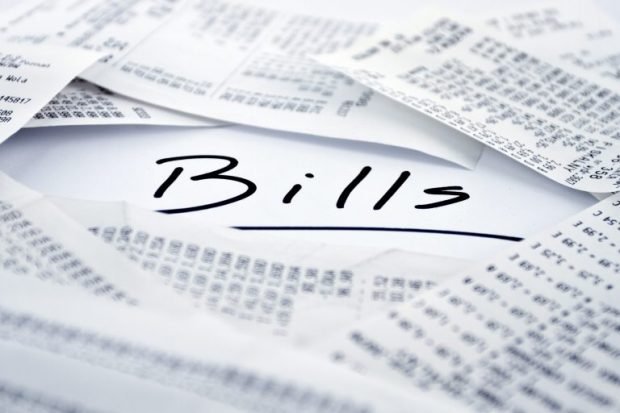Restore The Shield That Once Protected Home Sellers From Eye-Watering Taxes

Inflation isn’t the only thing that has soared in recent years.
Home prices, as measured by the Case-Shiller Home Price Index, have jumped 45.1% since the World Health Organization declared a pandemic in March 2020. Consequently, Americans are increasingly finding themselves subject to a long-forgotten capital gains tax on their home sales.
For the past 27 years, single taxpayers have benefited from a $250,000 capital gains exclusion on the sale of their main homes, while married taxpayers have enjoyed a $500,000 exclusion. The problem is that those exclusions date back to 1997, and their real, inflation-adjusted values have eroded significantly.
Even more problematic, while the cost of living has nearly doubled since 1997, average home prices have more than tripled! Higher home prices translate into more taxpayers paying capital gains taxes on their home sales.
Prior to the adoption of the Taxpayer Relief Act of 1997 (TRA), home sellers typically faced capital gains taxes unless they poured the proceeds from their home sale into an even more expensive home. TRA, passed with overwhelming bipartisan support, created an exclusion to shield home sellers from costly tax bills.
Unfortunately, the legislation President Bill Clinton ultimately signed into law did not index the exclusion for inflation.
According to CoreLogic, “Between 2000 and 2003, a few years after the passage of The Taxpayer Relief Act of 1997, only about 38,000 home sales per year, or 1.3% of existing home sales, had gross capital gains that exceeded the exemption limit. …. But that changed a couple of years ago as home prices surged sharply. In the peak year of 2022, more than 300,000 home sales had gross capital gains above the $500,000 exemption limit, a staggering 140% increase from pre-pandemic levels.”
Unless Congress increases and indexes the exclusion for inflation, an ever larger percentage of home sellers will be subject to capital gains taxes going forward.
To adjust for inflation since 1997, Congress would need to increase the $250,000 and $500,000 exclusions to $491,000 and $982,000, respectively.
Taxpayers in states with higher home prices would generally benefit more from an increase in the exclusions. The median home price in West Virginia, for example, is $285,000.
Less than 1% of West Virginians would benefit now from increasing the exclusion. Meanwhile, the median home price in California is $787,000. Upwards of 30% of Californians would benefit from increasing the exclusion.
Nonetheless, home sellers in all fifty states would increasingly benefit from restoring the exclusions to their inflation-adjusted 1997 values.
Broadly speaking, taxpayers in “blue” states — especially California, Hawaii, Colorado, Washington and Massachusetts — would benefit most from increasing the exclusions. But taxpayers, regardless of political orientation, should not be subject to capital gains taxes on the sale of a home if those gains have not been indexed for inflation.
Ideally, the federal government would index all capital gains for inflation. Indexing would prevent taxpayers from paying taxes on “phantom” gains.
For example, imagine you invest $1,000 and, after ten years, sell that investment for $1,200. But if inflation averaged 2.5% in that period, the $1,200 you receive will be worth less in real terms than the $1,000 you invested. And yet, under current law, you would pay a tax on a $200 capital gain.
TRA did not index capital gains for inflation, but the creation of large exclusions protected most Americans from having to pay capital gains taxes on phantom gains from the sale of a home. Sadly, those protections have eroded, and they should be restored.
Twenty years ago, in my capacity as a deputy assistant Treasury secretary, I looked into increasing and indexing the exclusions. At that time, however, inflation had only marginally diminished the inflation-adjusted value of the exclusions, and the Bush Treasury was grappling with other pressing matters.
In hindsight, I should have pushed to index the exclusions. But next year presents an opportunity to set things right.
Given that major elements of the Tax Cuts and Jobs Act of 2017 are slated to expire, the 119th Congress will inevitably devote considerable time to debating tax policy. Restoring and indexing the capital gains exclusion for the sale of a principal residence ought to be a significant part of that debate.
Following a two-year stint in the White House as an Associate Director of the National Economic Council, James Carter served as Deputy Undersecretary of Labor and a Deputy Assistant Secretary of the Treasury under President George W. Bush.
The views and opinions expressed in this commentary are those of the author and do not reflect the official position of the Daily Caller News Foundation.
Content created by The Daily Caller News Foundation is available without charge to any eligible news publisher that can provide a large audience. For licensing opportunities of our original content, please contact licensing@dailycallernewsfoundation.org
Agree/Disagree with the author(s)? Let them know in the comments below and be heard by 10’s of thousands of CDN readers each day!




